#jpl
Photo
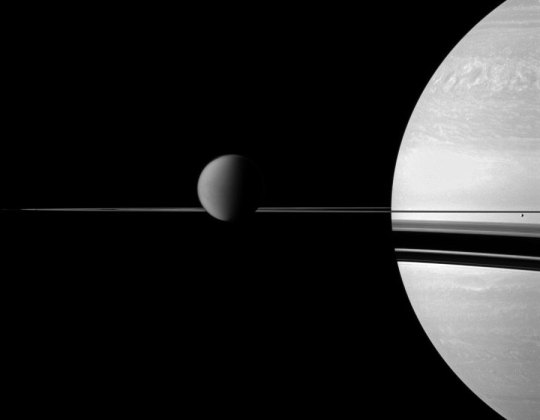
Titan, Rings, and Saturn from Cassini
Credits: Cassini Imaging Team, ISS, JPL, ESA, NASA
367 notes
·
View notes
Text

A Trailblazing Duo:
January 17, 2024 marks the 20th anniversary of Spirit and Opportunity's landing on Mars. The two of Mars Rovers, Spirit and Opportunity, landed on opposite sides of Mars and began exploring the planet. Since their landing, the rovers have sent more than 100,000 high-resolution, full-color images of the planet’s surface. Designed to last just 90 days, they exceeded expectations and changed the way we explore the Red Planet l more at NASA JPL

#space art#mars#Mars rover#Sprit and Opportunity#space#NASA#JPL#20 year anniversary#universe#planets#astronomy#solar system#the Red Planet
259 notes
·
View notes
Text
Aboard the International Space Station, there's a compact lab about the size of a small refrigerator that makes some of the coldest stuff in the universe. It's called the Cold Atom Lab, and for some time, scientists have been using this chamber to research the strange quantum properties of atoms in microgravity. But on Wednesday (Nov. 15), they announced they've reached a milestone.
Operated remotely by a team with NASA's Jet Propulsion Laboratory (JPL) in California, the Cold Atom Lab officially generated a quantum gas containing two species of atoms. This could ultimately open the door for totally new space-based experiments in quantum chemistry.
When thinking about states of matter, gases, liquids, solids and plasmas are the four well known ones — but there's also an exotic fifth state of matter, the Bose-Einstein condensate, that was first discovered in the 1990s.
This state hasn't been found in nature, but scientists can create it. Bose-Einstein condensates are generated in ultracold labs like the Cold Atom Lab, where lasers or magnets help chill a cloud of atoms close to absolute zero, or -459 degrees Fahrenheit (-273 degrees Celsius). That's the coldest temperature possible in the universe. In this state, atoms slow down, their edges blend together, and scientists can observe quantum effects that are usually very hard to investigate.
Continue Reading.
333 notes
·
View notes
Text
The Ingenuity Rover's Helicopter, nicknamed Ginny, is broken and alone

"In this most recent photo of Ingenuity, the dual-rotor 'copter can be seen motionless on a sandy dune in the background, as a barren, rocky Mars landscape fills the foreground.
The photo was taken on Feb. 4, 2024, at 1:05 p.m. local mean solar time, a little over two weeks since it suffered its mission-ending damage.


NASA and JPL's Ingenuity helicopter on the surface of Mars as seen by the Perseverance rover's Mastcam-Z camera on Feb. 4, 2024.
Ingenuity suffered damage to its rotors during a flight on Jan. 18 as it made a landing on a featureless, "bland" patch of sandy Martian landscape. The helicopter usually makes use of landscape features such as rocks to help it navigate, but its 72nd flight found the drone without visual cues.
The Jet Propulsion Laboratory (JPL) is still analyzing the damage to Ingenuity's blades, but regardless of what JPL finds, the helicopter's mission has officially come to an end now that it's no longer capable of flight.
Ingenuity landed alongside its robotic companion, the Perseverance rover, on Feb. 18, 2021. When it took to the Martian skies in April 2021, Ingenuity made history by conducting the first flight of a powered aircraft on another planet.
The Ingenuity-Perseverance duo has been exploring an area known as Jezero Crater ever since, discovering signs of ancient bodies of water on the Red Planet that may have once harbored life billions of years ago. Ingenuity served as a scout for Perseverance, identifying areas of interest for the rover to explore.
In recent weeks as NASA and JPL have been coming to terms with the end of Ingenuity's groundbreaking mission, agency leaders have praised the helicopter and the teams behind it.
'We couldn't be prouder or happier with how our little baby has done,' said Teddy Tzanetos, Ingenuity Project Manager at JPL, during a livestreamed tribute to the helicopter on Jan. 31. 'It's been the mission of a lifetime for all of us. And I wanted to say thank you to all of the people here that gave their weekends, their late nights. All the engineers, the aerodynamic scientists, the technicians who hand-crafted this aircraft.'
Tiffany Morgan, NASA's Mars Exploration Program Deputy Director, added that Ingenuity leaves behind a legacy that could pave the way for future aerial missions on other worlds.

This image, which shows the shadow of a damaged rotor on NASA's Mars helicopter Ingenuity, was taken after its 72nd and final flight on Jan. 18, 2024 on the Red Planet.
'The NASA JPL team didn't just demonstrate the technology, they demonstrated an approach that if we use in the future will really help us to explore other planets and be as awe-inspiring, as amazing, as Ingenuity has been,' Morgan said during the livestream.
NASA is already developing another drone destined for another world, the nuclear-powered Dragonfly, to someday explore Saturn's largest moon, Titan. The agency expects Dragonfly to launch no earlier than 2028."
#Ingenuity#Ingenuity Rover#ingenuity helicopter#Ginny#Helicopter#Mars Helicopter#Mars Rover#Rover#Mars#NASA#JPL#February#2024#my post
98 notes
·
View notes
Text
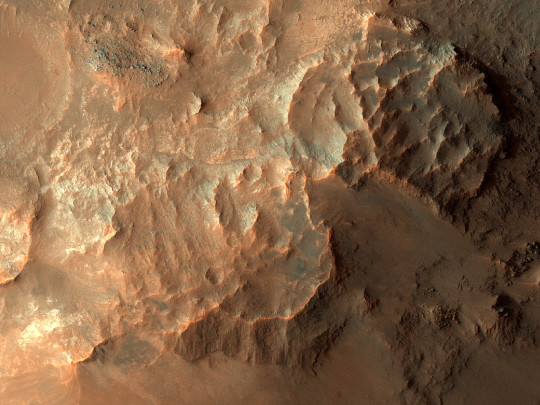
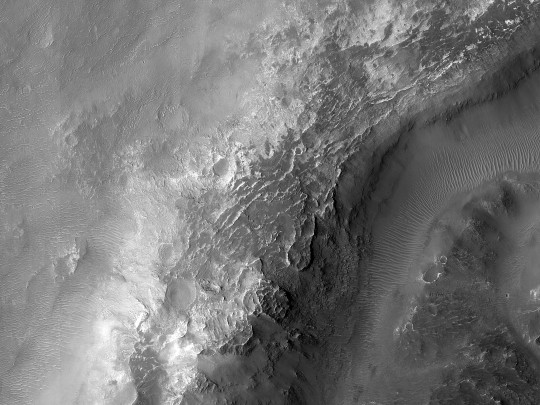
HiPOD 25 Aug 2023: A Possible Clay-Rich Deposit
The nearby Nirgal Vallis locale exposes a clay unit in its valley walls. This observation aims to determine if this unit can be determined elsewhere in the region, such as in excavations in nearby craters. This crater likely has nice bedrock exposures, as visible in THEMIS and Context Camera data, and an overlapping CRISM image indicates a clay exposure.
ID: ESP_074022_1525
date: 12 May 2022
altitude: 257 km
NASA/JPL-Caltech/UArizona
192 notes
·
View notes
Photo

345 notes
·
View notes
Text
5 Ways Studying Water Will Help Us Better Understand Earth
Studying our home planet is just as powerful as exploring what’s beyond it.
Surface Water and Ocean Topography (SWOT) is a joint mission developed by NASA and the French space agency Centre National d’Études Spatiales (CNES), with contributions from the Canadian Space Agency and the UK Space Agency. It will track water on more than 90% of Earth’s surface and help communities, scientists, and researchers better understand this finite and vital resource. And it’s launching this month!
So how will SWOT help us better understand Earth? Here are 5 ways.

SWOT will address some of the most pressing climate change questions of our time.
An important part of predicting our future climate is determining at what point Earth’s ocean water slows down its absorption of the excess heat in the atmosphere and starts releasing that heat back into the air, where it could accelerate global warming. SWOT will provide crucial information about this global heat exchange between the ocean and the atmosphere, enabling researchers to test and improve future climate forecasts.
The satellite will also offer insights to improve computer models for sea level rise projections and coastal flood forecasting.
Data from SWOT will additionally help scientists, engineers, water managers, and others better monitor drought conditions in lakes and reservoirs and improve flood forecasts for rivers.

SWOT is the first satellite mission that will observe nearly all water on the planet’s surface.
SWOT will measure the height of water in Earth’s lakes, rivers, reservoirs, and the ocean, giving scientists the ability to track the movement of water around the world.
SWOT’s eye in the sky will provide a truly global view of the water on more than 90% of Earth’s surface, enriching humankind’s understanding of how the ocean reacts to and influences climate change along with what potential hazards – including floods – lie ahead in different regions of the world.

SWOT will see Earth’s water in higher definition than ever before.
Because everything is better in HD 😉, SWOT will view Earth’s ocean and freshwater bodies with unprecedented clarity compared to other satellites, much like a high-definition television delivers a picture far more detailed than older models. This means that SWOT will be able to “see” ocean features – like fronts and eddies – that are too small for current space-based instruments to detect. Those measurements will help improve researchers’ understanding of the ocean’s role in climate change.
Not only will the satellite show where – and how fast – sea level is rising, it will also reveal how coastlines around the world are changing. It will provide similar high-definition clarity for Earth’s lakes, rivers, and reservoirs, many of which remain a mystery to researchers, who aren’t able to outfit every water body with monitoring instruments.
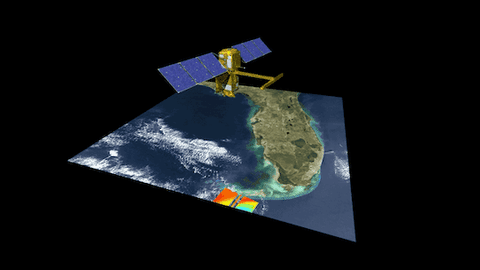
SWOT data will be used to help make decisions about our daily lives and livelihoods.
As climate change accelerates the water cycle, more communities around the world will be inundated with water while others won’t have enough. SWOT data will be used to monitor drought conditions and improve flood forecasts, providing essential information to water management agencies, disaster preparedness agencies, universities, civil engineers, and others who need to track water in their local areas. SWOT data also will help industries, like shipping, by providing measurements of water levels along rivers, as well as ocean conditions, including tides, currents, and storm surges.

Finally … SWOT will pave the way for future Earth missions.
With its innovative technology and commitment to engaging a diverse community of people who plan to use data from the mission, SWOT is blazing a trail for future Earth-observing missions. SWOT’s data and the tools to support researchers in analyzing the information will be free and accessible. This will help to foster research and applications activities by a wide range of users, including scientists, resource managers, and others who in the past may not have had the opportunity to access this kind of information. Lessons learned from SWOT will lead to new questions and improvements for future missions, including our upcoming Earth System Observatory, a constellation of missions focused on studying key aspects of our home planet.

Keep track of the mission here. And make sure to follow us on Tumblr for your regular dose of space!
853 notes
·
View notes
Text
relistening to the JPL arc rn and knowing what we now know about hermie,
i firmly believe that what hermie wrote on the board was just baby jibberish. like not equations. just nonsensical letters and words.
#dndads#dungeons and daddies#dndaddies#thrush talks#thrush rambles#dndads s2#dndads quest#hermie the unworthy#dndads hermie#jpl
55 notes
·
View notes
Text


This is Ethan Peck visiting JPL to take a look at the Europa Clipper, a spacecraft that will be launched in October towards the Jovian moon in hopes of exploring that strange new world!
Just look at how happy and nerdy he looks at JPL. Props to whoever invited him, because it's only logical to invite Mr. Spock to JPL. And props to Ethan for supporting science and exploration! I love this man 🖖🥹
#ethan peck#mr. spock#star trek#strange new worlds#Europa Clipper#JPL#Jet Propulsion Laboratory#NASA#space#the final frontier#europa#Jupiter#planets#solar system#space exploration#science#physics#astronomy#astrophysics#rocket science#spacecraft#satellite
163 notes
·
View notes
Text
Debugging Code 15 Billion Miles Away
NASA’s Voyager 1 Resumes Sending Engineering Updates to Earth
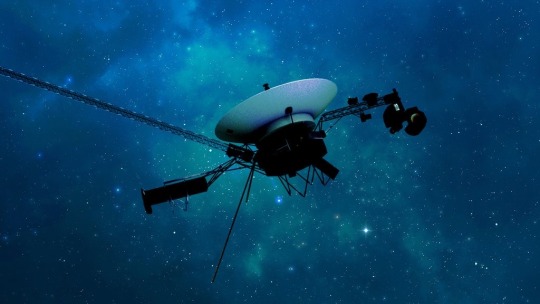
For the first time since November, NASA’s Voyager 1 spacecraft is returning usable data about the health and status of its onboard engineering systems. The next step is to enable the spacecraft to begin returning science data again. The probe and its twin, Voyager 2, are the only spacecraft to ever fly in interstellar space (the space between stars).
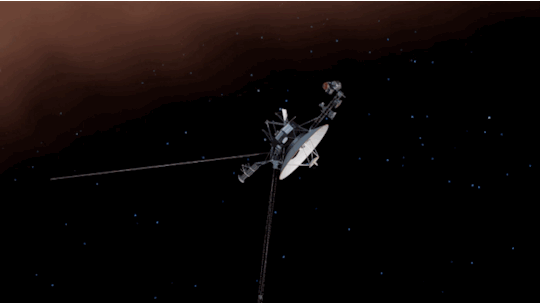
Voyager 1 stopped sending readable science and engineering data back to Earth on Nov. 14, 2023, even though mission controllers could tell the spacecraft was still receiving their commands and otherwise operating normally. In March, the Voyager engineering team at NASA’s Jet Propulsion Laboratory in Southern California confirmed that the issue was tied to one of the spacecraft’s three onboard computers, called the flight data subsystem (FDS). The FDS is responsible for packaging the science and engineering data before it’s sent to Earth.
The team discovered that a single chip responsible for storing a portion of the FDS memory — including some of the FDS computer’s software code — isn’t working. The loss of that code rendered the science and engineering data unusable. Unable to repair the chip, the team decided to place the affected code elsewhere in the FDS memory. But no single location is large enough to hold the section of code in its entirety.
So they devised a plan to divide the affected code into sections and store those sections in different places in the FDS. To make this plan work, they also needed to adjust those code sections to ensure, for example, that they all still function as a whole. Any references to the location of that code in other parts of the FDS memory needed to be updated as well.
The team started by singling out the code responsible for packaging the spacecraft’s engineering data. They sent it to its new location in the FDS memory on April 18. A radio signal takes about 22 ½ hours to reach Voyager 1, which is over 15 billion miles (24 billion kilometers) from Earth, and another 22 ½ hours for a signal to come back to Earth. When the mission flight team heard back from the spacecraft on April 20, they saw that the modification worked: For the first time in five months, they have been able to check the health and status of the spacecraft.
33 notes
·
View notes
Photo

Io in True Color
Credits: NASA, JPL, Galileo Project
264 notes
·
View notes
Text
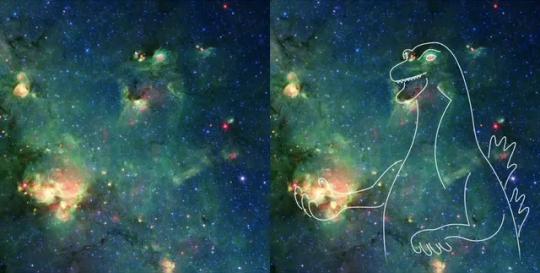
Godzilla Nebula !
NASA's Spitzer telescope spotted a nebula that looks like it could rise up out of the ocean and flatten a city if it felt like it. NASA JPL talked up the wild image in 2021 just in time for Halloween, saying it looks like a cosmic portrait of infamous movie monster Godzilla!
#art#cosmos#cosmic#universe#blast#space#photography#stars#godzilla#nebula#funny#fun#funny picture#haloween#nasa#spitzer telescope#jpl#monster#surreal
30 notes
·
View notes
Text
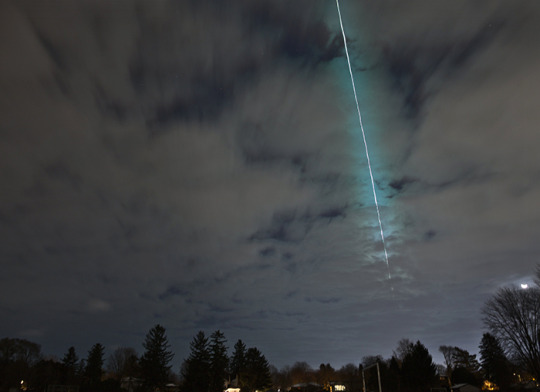
Asteroid lit up the sky l NASAJPL
l time-lapse photo of a tiny asteroid, 2022 WJ1, on a collision course with Earth (Canada, Nov. 19)
#nasa#space#astrophotography#astronomy#JPL#galaxy#planets#night#sky#stars#solar system#asteroid#universe
620 notes
·
View notes
Text
TATERS THE CAT
youtube
33 notes
·
View notes
